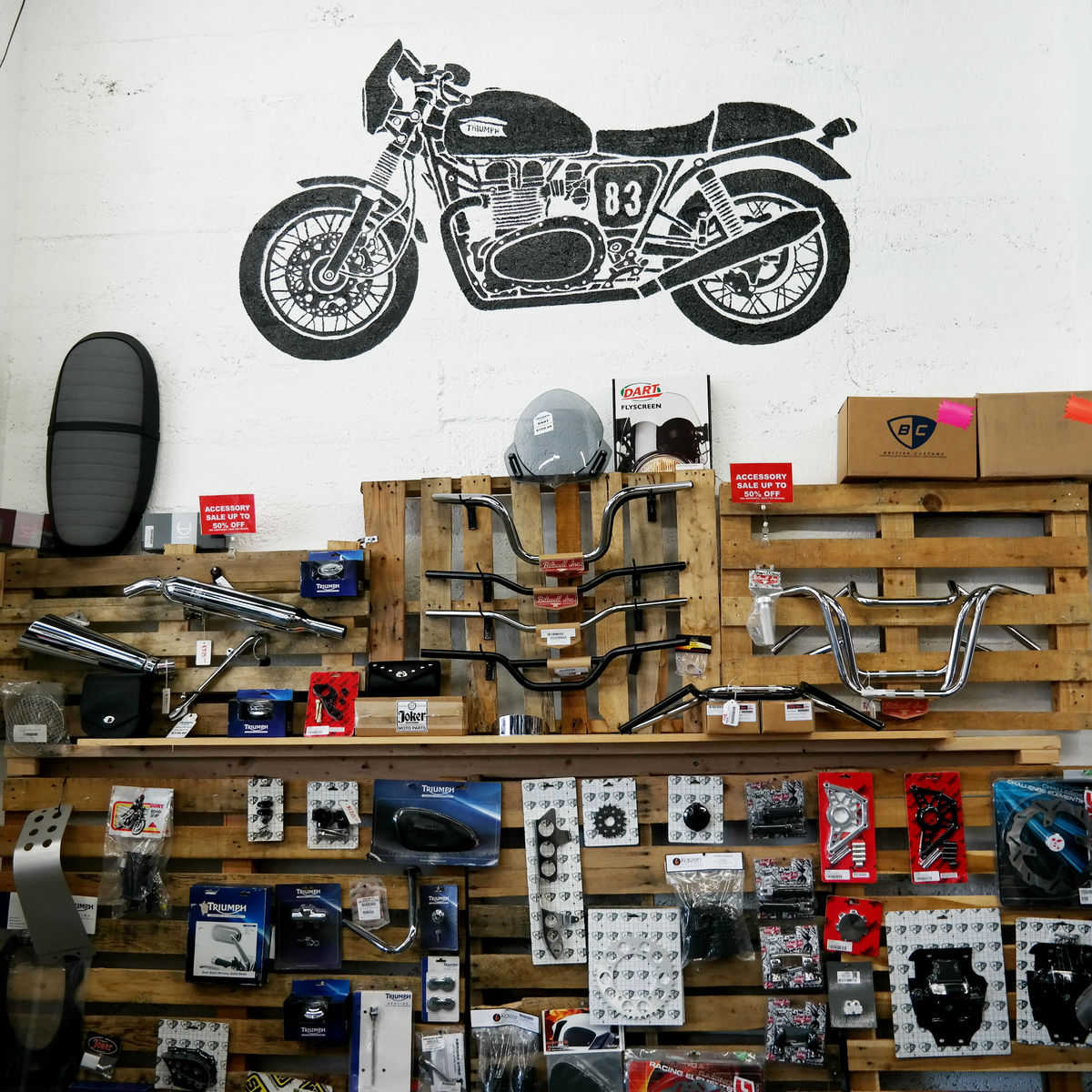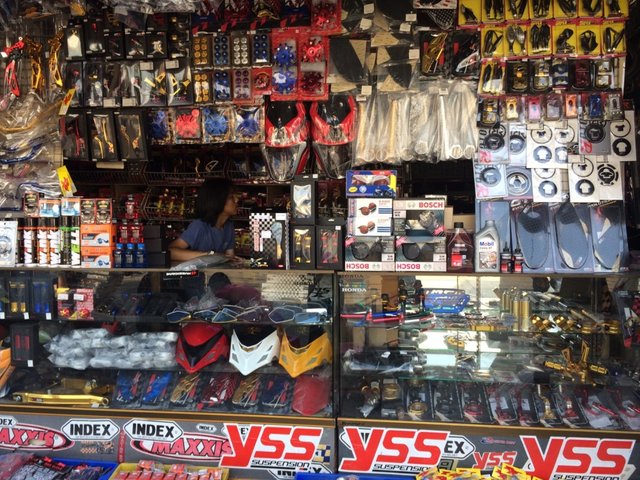Discover Top Quality Moto Parts NZ for All Your Motorcycle Demands
Discover Top Quality Moto Parts NZ for All Your Motorcycle Demands
Blog Article
Recognizing the Crucial Components of a Bike: A Comprehensive Guide for Fanatics
For motorbike fanatics looking to boost their riding experience and guarantee their bikes run efficiently, understanding the essential parts of a motorbike is critical. Each element, from the engine's detailed workings to the important duty of the braking devices, not just affects efficiency however likewise safety and security and comfort.
Engine Elements

The camshaft plays an essential function in managing the timing of the engine's valves, making sure the exact opening and closing necessary for reliable gas and air consumption, along with exhaust expulsion. This timing is crucial to maintaining optimal engine efficiency and efficiency. Furthermore, the carburetor or fuel injection system, depending on the bike design, is accountable for mixing air with gas in the correct ratio for burning.
The cooling system, either air or liquid-based, functions to keep the engine's temperature within operational restrictions, protecting against overheating and ensuring durability - motox parts nz. Each part, carefully designed and integrated, adds to the smooth operation of the engine, specifying the bike's power outcome and overall efficiency
Transmission System
Integral to the motorbike's functionality, the transmission system makes certain reliable power transfer from the engine to the wheels. This system makes up several vital elements, including the clutch, gearbox, and last drive, each playing a crucial duty in translating the engine's power right into motion. The clutch, normally run by a hand bar, serves to involve and disengage the engine from the transmission, enabling smooth equipment adjustments and regulated acceleration.
The gearbox, usually described as the transmission proper, has a set of equipments that bikers can manually move through to adjust the bike's speed and torque output. These equipments are prepared in a series that allows the motorcycle to speed up smoothly and maintain optimal engine performance across different speeds. The majority of bikes utilize a consecutive gearbox, calling for the cyclist to change equipments in a fixed order.
Braking Devices
While recognizing the transmission system is key to using a motorcycle's power, just as important is the capability to regulate and quit that power properly, which is where braking systems come into play. Brakes are vital for safety and security and performance, supplying the cyclist with the needed control to navigate different surfaces and problems. Normally, motorbikes feature two sorts of stopping systems: disc brakes and drum brakes.
Disc brakes are much more widespread in contemporary bikes due to their premium efficiency. They are composed of a brake disc, caliper, and pads. When activated, the caliper presses the brake pads versus the rotating disc, converting kinetic power into warm, therefore slowing the wheel. This system provides far better warm dissipation, constant efficiency, and enhanced quiting power, specifically in damp conditions.
Alternatively, drum brakes, though less usual, are still located in some motorcycles. They function by pressing brake footwear versus the internal surface of a drum affixed to the wheel. While typically much less effective in warm dissipation and stopping power, drum brakes are easier and a lot more cost-effective.
Understanding these stopping systems' subtleties allows bikers to maintain their motorcycles effectively and value the design that ensures safe and efficient quiting.
Suspension and Guiding
Suspension and guiding systems are essential parts that substantially influence a bike's handling and adventure comfort. The shock absorber, including forks at the front and shock absorbers at the rear, soaks up road irregularities, improving stability and control. Front forks, usually telescopic or upside down, compress and rebound to minimize influences, while rear shock absorbers preserve tire contact with the roadway, critical for grip and security.
Steering, focused around the handlebars, connects the rider to the motorbike's directional control. The guiding head bearings make certain smooth procedure, allowing precise maneuverability. Appropriate positioning and upkeep of these bearings are crucial for foreseeable steering feedback and minimizing rider fatigue.
The suspension's adjustability is an additional critical facet; preload, damping, article and rebound setups allow customization to navigate to this website suit different riding styles and problems. This flexibility is crucial for maximizing efficiency, whether browsing metropolitan streets or dealing with sturdy tracks. Technologies like digital shock absorber supply real-time changes, enhancing experience high quality throughout varied surfaces.

Electric Equipments
After making sure a smooth and controlled ride through efficient suspension and guiding systems, attention transforms to the electric systems, a crucial facet of modern-day bikes. These systems play an important duty not only in beginning the engine however additionally in powering numerous components that enhance the capability and safety and security of the motorcycle.
At the heart of a bike's electrical system is the battery, which stores electrical power necessary for starting the engine and powering supporting systems - motocross gear nz. The generator or generator, coupled with the rectifier-regulator, ensures the battery remains charged while the motorbike functions, converting power right into electric energy and preserving voltage levels
The ignition system, an additional critical element, is in charge of igniting the air-fuel blend in the engine's cyndrical tubes. Modern bikes typically utilize a digital ignition system, supplying higher efficiency and dependability compared to traditional systems.
Illumination systems, consisting of headlights, tail lights, and indicators, are additionally vital, guaranteeing presence and safety for the cyclist. Additional digital parts such as sensors, control units, and presents add to sophisticated attributes like fuel shot management, anti-lock braking systems (ABDOMINAL MUSCLE), and digital control panels, further improving the riding experience.
Verdict
A detailed comprehension of a motorbike's important components, including the engine, transmission system, stopping mechanisms, suspension, steering, and electrical systems, is indispensable for lovers intending to enhance efficiency, comfort, and safety and security. Proficiency of these components enables for notified choices regarding Look At This upkeep and upgrades, ultimately boosting the riding experience. By incorporating this expertise, riders can guarantee their bikes operate at peak effectiveness and integrity, thus making the most of both enjoyment and longevity of their vehicles.
For motorcycle fanatics looking to boost their riding experience and guarantee their bikes run efficiently, recognizing the crucial components of a motorcycle is critical.Integral to the motorcycle's functionality, the transmission system ensures reliable power transfer from the engine to the wheels.While recognizing the transmission system is crucial to taking advantage of a bike's power, equally crucial is the ability to control and quit that power effectively, which is where braking devices come into play. Typically, motorcycles feature two kinds of braking systems: disc brakes and drum brakes.
A complete understanding of a motorbike's important parts, including the engine, transmission system, braking systems, suspension, guiding, and electric systems, is important for enthusiasts aiming to enhance safety, performance, and comfort.
Report this page